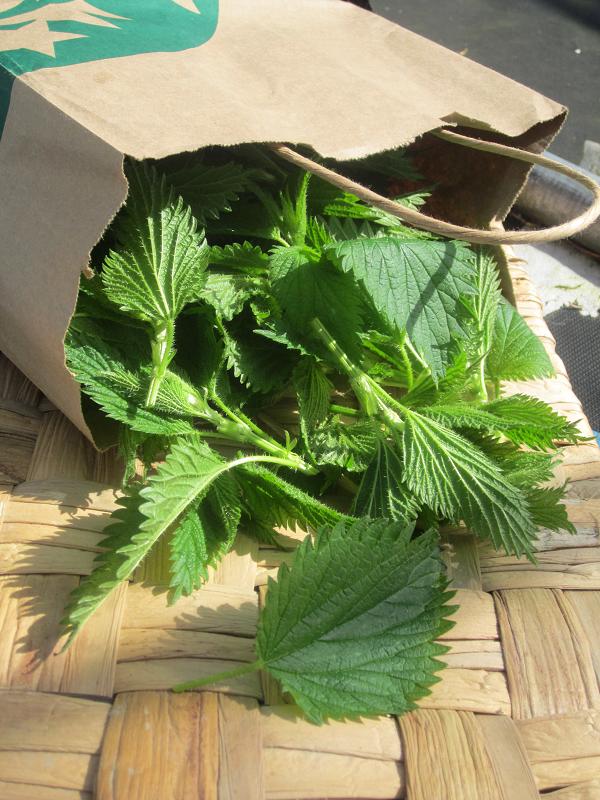 The word “Grace” is defined in a lot of different ways:
The word “Grace” is defined in a lot of different ways:
- A characteristic or quality pleasing for its charm or refinement.
- Divine love bestowed freely on people by a higher power.
- A disposition to be generous or helpful; goodwill.
- A favor rendered by one who need not do so; indulgence.
- A prayer before eating to give thanks.
I’ve been thinking a lot about grace lately, ever since my Uncle Wayne passed away. It kind of bubbles away on my mind’s back burner while I type, but don’t get bummed, this isn’t a story about that. Even though other events may frame it, this is about rambling in the forest with friends (old and new) picking weeds and accidentally getting a nasty rash.
It started like this:
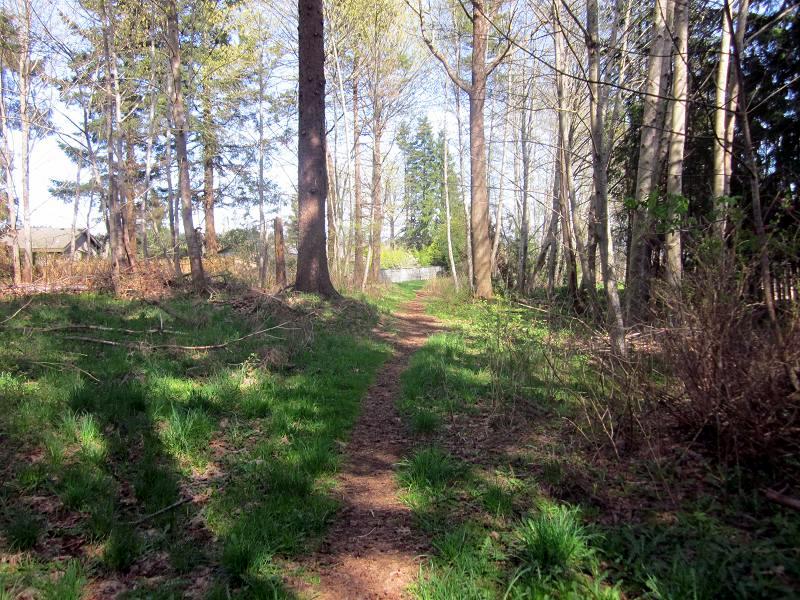 I was in my back yard, clearing out last autumn’s overgrowth, when one of my neighbors walked through the green belt (the wooded footpath winding behind the houses on our block) with what looked like a potato sack full of grass clippings.
I was in my back yard, clearing out last autumn’s overgrowth, when one of my neighbors walked through the green belt (the wooded footpath winding behind the houses on our block) with what looked like a potato sack full of grass clippings.
Her : “What’s up?”
Me: “Not much, clearing weeds”
Her: “Me too. ‘Cept mine taste good!”
Me: “What have you got?”
Her: “Nettles. They’re really good for you, and they’re free! They taste like green.”
Me: “Show me!”
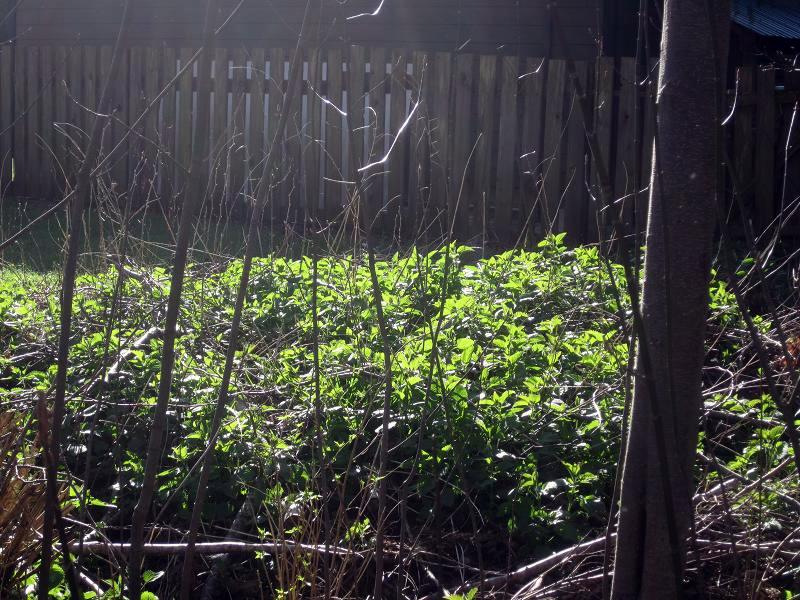 We walked together just two houses down, and there they were: A Volkswagen-sized patch of brightly green foot-tall weeds running right alongside the path. I must have scooted past them on my way to work a million times without glancing at ‘em once.
We walked together just two houses down, and there they were: A Volkswagen-sized patch of brightly green foot-tall weeds running right alongside the path. I must have scooted past them on my way to work a million times without glancing at ‘em once.
They were stinging nettles, a short, herbaceous, green and slightly fuzzy-looking weed native to most of North America, long revered since ancient times as a spring foraged food source. Nowadays they are (like almost every long-forgotten herb) hailed as a “superfood” and mostly made into teas or extracts to treat anxiety, depression, circulatory diseases and a host of other things.
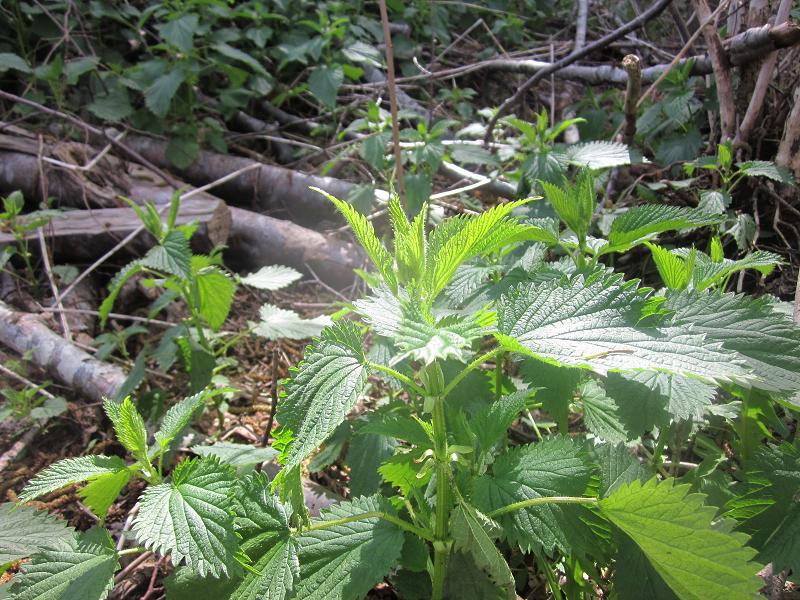 At the time we found them they were only half a foot tall and had only two or three stories of leaves. The bud opened proudly at the top, but had yet to flower. My guide explained that late March to mid-April was the time to harvest them, when they were still nice and short and their stinging hairs (trichomes) and leafy grit had yet to fully and painfully develop.
At the time we found them they were only half a foot tall and had only two or three stories of leaves. The bud opened proudly at the top, but had yet to flower. My guide explained that late March to mid-April was the time to harvest them, when they were still nice and short and their stinging hairs (trichomes) and leafy grit had yet to fully and painfully develop.
Oh yeah, there’s a reason why they are called “stinging” nettles.
I was just about to reach down to examine one when my neighbor cautioned me, “Call ‘em stinging for a reason there, they hurt like hell!” Wow! She was right. Even in this infant stage these raw nettles had enough little piercing hairs to raise a nice red rash on my skin if rubbed in the wrong way. I asked her how and why in the world would anyone want to eat something that could raise blisters on the skin!? She beamed a solar flare of ancient wisdom all over my 21 century no-nothing self.
“Cause that’s all there was back in the day. All they had in spring to eat was the first bits of greenery to be seen. Turns out, those were the best bits. Tender, bitter little things that would clean out ‘yer system after a long winter of eating heavy, tough vegetables and meat. Makes you believe it’s all planned that way… Sacred, if you believe in all that stuff. You can cook it like any green, and all the sting goes away. I’m ‘gonna make Spanakopita, it’s Greek! Do you know that one?”
We walked back to my place, her with her bag of nettles, and me with a head buzzing with new possibilities. Just before we split off, she stopped a minute and looked me over.
“What’s your name again?”
I told her my name, and she smiled.
“I’m Grace, nice to meet you.”
Right on.
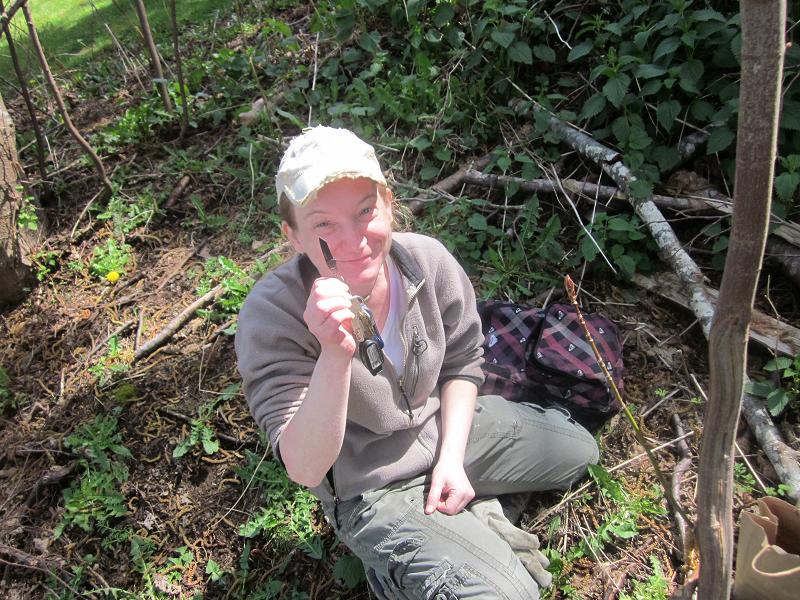 Less than an hour later I received a Facebook message from my good friend, fellow online author and fearless forager Toni. She had just had a similar Stinging Nettle experience, but her patch was smaller, and she was on the prowl for a full duffle bag kind of payoff. I told her about Grace and my gold mine of free weeds in the back yard and she was there the next day.
Less than an hour later I received a Facebook message from my good friend, fellow online author and fearless forager Toni. She had just had a similar Stinging Nettle experience, but her patch was smaller, and she was on the prowl for a full duffle bag kind of payoff. I told her about Grace and my gold mine of free weeds in the back yard and she was there the next day.
Alright, let’s take a second to break narrative and cover what gear we (and hopefully, you) will need to get foraging.
What you will need to Forage Stinging Nettles
- Long Pants – You do not want to rock shorts on this trip. The first time you bend down and a nettle licks your kneecap, you’re going to regret you made this particular fashion decision.
- Gloves –Yeah, they’ll give you a rash. Bring some gloves for general handling.
- Knife – You could also grab a pair of scissors (very precise!), but my Opinel worked just fine.
- Bag – Toni wisely suggested using a thick paper bag with handles and a flat bottom (the kind you would get at Starbucks) allowing it to sit open and upright while you toss nettles into it.
- No Pets! –Dogs and cats become interested in what their people are interested in, and might come sniffing around the nettle patch. Leave them inside or prepare to spend the rest of the day nursing a grumpy dog with a sore nose.
Toni and I carefully waded into the nettle patch and in no time at all we had filled the whole bag!
The technique that we used was to gently cup the bud of the plant, while cutting just below the first, smallest set of leaves nearest to the top. A quick jerk of the knife and you should be left with only the bud and a couple of small leaves in your hand. This is the tenderest part of the plant and the best bit for eating. The larger leaves found further down the stalk are flavourful, but tough and covered with unpleasant spines and grit. Still, they can be cleaned up, dried and used in a restorative Nettle Tea.
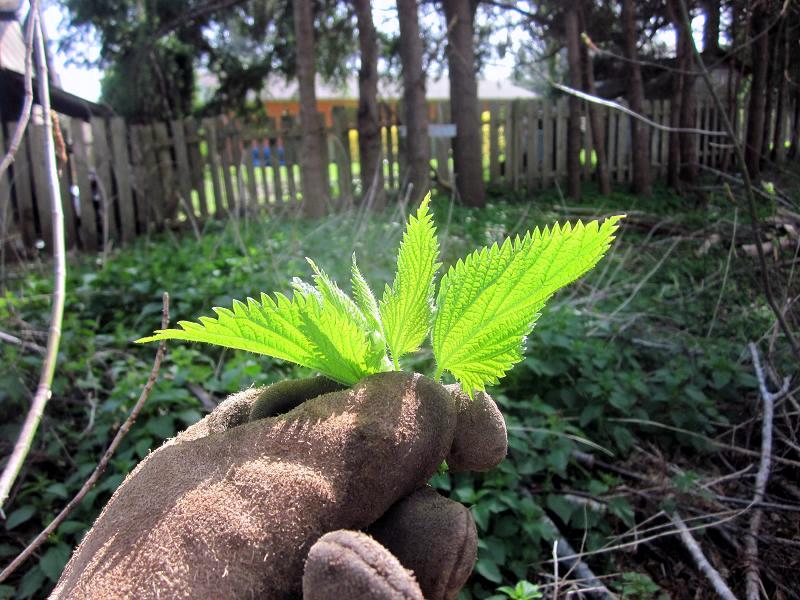 Toni, my own personal Obi-Wan, and I chatted the whole time about foraging, drying herbs, cooking and the the staggering number of health benefits of wild plants. It was a great time, and when we got back to my place, she was kind enough to let me have the loin’s share of nettles.
Toni, my own personal Obi-Wan, and I chatted the whole time about foraging, drying herbs, cooking and the the staggering number of health benefits of wild plants. It was a great time, and when we got back to my place, she was kind enough to let me have the loin’s share of nettles.
So, now it’s up to me to process a whole bag of nettles and make something delicious out of ‘em. No problem, I’ve got all the know-how I need thanks to charming, generous, knowledgeable people like Toni and Grace. Big love guys!
Tune in next week to find out how to clean and cook ‘yer nettles, and exactly how much of my body became covered in nettle rash. The truth may shock you! *laughs*
For a great Japanese-inspired salad, check out this recipe: Stinging Nettle Goma-ae.
Grace sounds like a cool lady. 🙂
This resonates with me: “…little things that would clean out ‘yer system after a long winter of eating heavy, tough vegetables and meat. Makes you believe it’s all planned that way…”
I am excited at this new discovery for me !
To think , all these years living in a house with a backyard
of trees & natural forest area , just step out the back door , patches of nettle growing every where. Not knowing all the health benefits of a plant that I used to avoid. I am going to pick nettle leaves and store for winter tea!Thanks Shawn!
Well, just went out to pick some of these nettles myself to dry for tea, and also for eating. I really like the rich green flavour of the leaves when they are cooked.
I found a lot of nettles, some of the ones that Shawn and Toni topped two weeks ago had already sprouted anew and that was pretty exciting. They haven’t flowered yet, but they are close so they are now approaching the end of their season.
I stung myself once with as little as a brief graze on my arm, and oh boy did it ever hurt! It felt a little like a burn from steam, but it only lasted about thirty minutes, and didn’t even turn red. It certainly was shocking though! It hurt pretty bad at first, and then started to die down.
I am eager to try the tea and see how it tastes, I will let you know!
Thanks for the great advice and ideas Shawn!